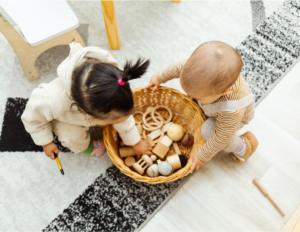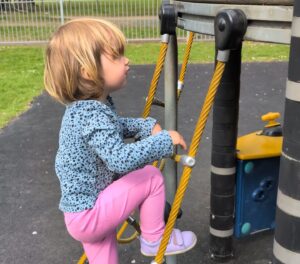A quiet classroom: tips from a Montessori teacher
My memories of the nursery class I attended as a child is of a loud and busy environment where teachers desperately tried to make themselves listened to and overcome the general noise. Although I don’t remember how it exactly made me feel, I do know that, as an adult, I find noisy environments overwhelming and tiring. Noise, clutter and chaos dry up my energy and make me feel out of control. What effect might the same conditions have on children? We know they absorb without filters everything the environment offers. Moreover, they are in the process of developing coping mechanisms and self-regulation. Creating a calm classroom is crucial not only for our sanity but to ensure the well-being of children.
Are Montessori classrooms quiet?
The first time I walked into a Montessori classroom, I was shocked to realize how quiet it was! Most children were busy and engaged and teachers were moving around from one table to another, barely noticeable. Everyone was moving slowly and speaking in a low tone of voice. Now and again, someone would accidentally drop something and draw attention for a moment before everyone went back to their business. When necessary, the teachers approached the children to remind them of the classroom expectations. With time, I have learnt that not all the classroom does not always look like that. Transitions can be chaotic like in any other classroom and some days…are just messy. However, in my experience, Montessori teachers put a lot of effort into creating a quiet classroom. Let’s see what are the best strategies to create a calm environment in any classroom.
Setting expectations
Human beings function better when they know with clarity what their expected behaviour is. Children are not different and making them aware of the classroom ground rules helps them feel at ease and in control. In a previous post, I have highlighted the three fundamental limits of the Montessori classroom: respect for others, ourselves and the environment. Because of these rules, we ask children to speak at a low volume and walk when in the classroom. In this way, we prevent accidents and falls and, at the same time, we protect the concentration of the children who are focusing on activities. Running and speaking loud is acceptable only when outdoor.ve

Being a role model
Children are watching and learning from us all the time. The more the adults is important to them and more likely they are to imitate their behaviour, whether that is good or not. For this reason, the most effective way to get children to comply with our expectations is by doing the same. Remember then to move slowly when in the classroom and with grace. If children are misbehaving, avoid shouting from one side to another but approach them calmly, with a firm and soft voice. Shouting is unpleasant, puts children at shame in front of others, makes them angry at us and unable to listen.
Allowing plenty of outdoor time
Moving is essential for children under six. It is not only a way of burning energy but also the preferred way of exploring the environment. The outdoor allows them to explore with all the senses, use their whole body, test themselves and develop physical strength. The benefits of outdoor play are not only physical but also on their well-being. Being outside has been proved to help children independence, self-awareness and confidence in their abilities. Children that spend adequate time outdoor are usually calmer in the classroom.
Check-in with yourself
We cannot expect to create a quiet classroom if we are impatient, on edge or angry. Dealing with our emotions, learning to control our reactions is fundamental as our mood will spread in the classroom and influence children. Take a break when needed, ask for help if you are losing your temper, step away and don’t forget to breathe!
Recommended readings:
Thich Nhat Hanh (2017), Happy teachers change the world
Thich Nhat Hanh (2007) Planting seeds. Practicing mindfulness with children








One Comment
Comments are closed.